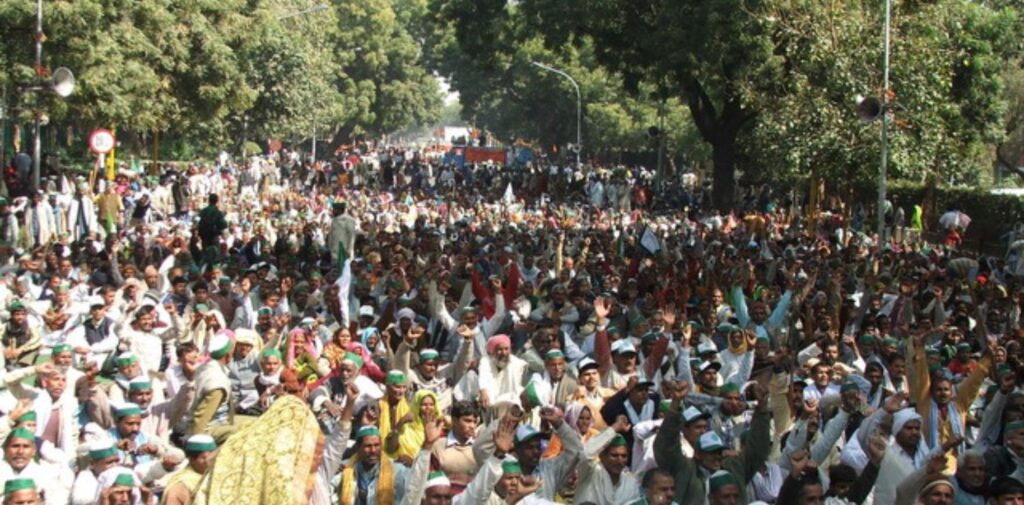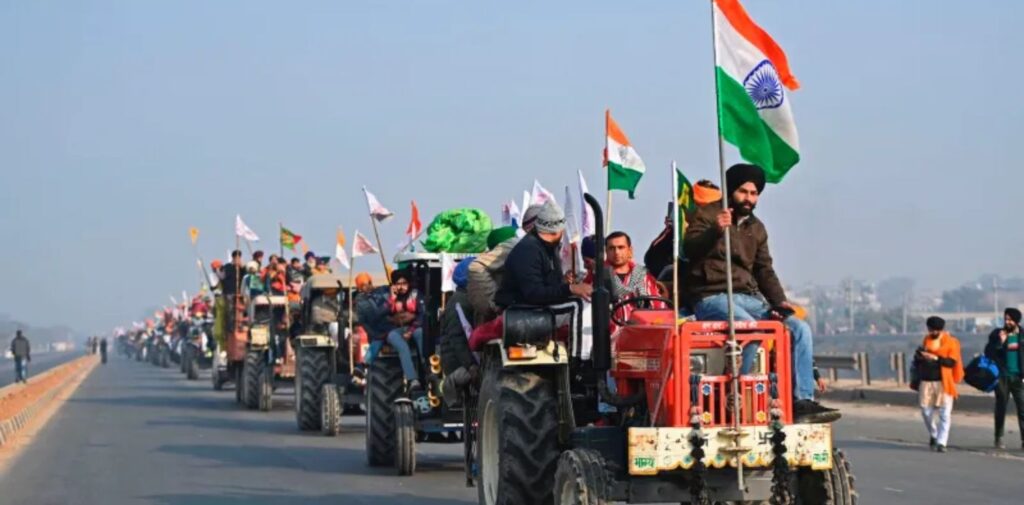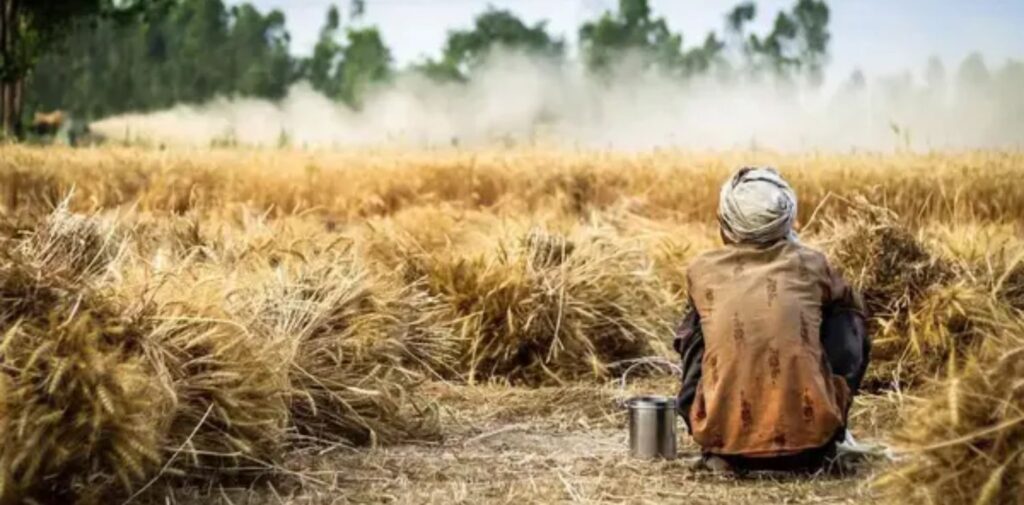India is a country that is largely dependent on farming. Many people in India are farmers, and their work helps feed the country. For years, farmers have faced many challenges, such as poor prices for their crops, droughts, and unfair treatment. To address these issues, farmers have come together to form farmers’ movements. These movements are groups of farmers who unite to fight for their rights and demand better living conditions. The role of farmers’ movements in Indian politics is very important, as they have helped shape policies, bring attention to farmers’ problems, and even brought about changes in the law. This article will help explain how these movements work and how they influence Indian politics.
What Are Farmers’ Movements?
A farmers’ movement is when a large group of farmers come together to fight for their rights. Farmers often form these movements to demand better prices for their crops, fair treatment, better working conditions, and government support. These movements can take different forms, such as protests, strikes, and petitions.
Farmers’ movements are not new in India. In fact, they have been an important part of India’s history. Farmers have always played a crucial role in the country’s economy and politics, and their movements have helped bring about many changes.

The Early Farmers’ Movements
The story of farmers’ movements in India dates back to the time before independence. During British rule, farmers were often exploited by landlords and the British government. The British imposed heavy taxes on farmers, which made it difficult for them to make a living. Farmers struggled to get fair prices for their crops, and many were forced into debt.
One of the earliest farmers’ movements was the Champaran Movement in 1917. This movement was led by Mahatma Gandhi in the Champaran district of Bihar. Farmers in Champaran were forced to grow indigo (a type of dye) for British landlords, and they were treated unfairly. Gandhi organized the farmers and led them to demand better working conditions. This movement was one of the first steps toward India’s independence and showed how farmers could come together to fight for their rights.
Another important farmers’ movement before independence was the Bardoli Satyagraha in 1928, which took place in Gujarat. The farmers of Bardoli were facing an unfair increase in land taxes by the British government. The farmers, led by Sardar Vallabhbhai Patel, went on strike and refused to pay the increased taxes. After many months of struggle, the British government was forced to roll back the tax hike. This movement helped build Patel’s reputation as a leader of the people.
Farmers’ Movements After Independence
After India gained independence in 1947, farmers continued to face many problems. They still struggled with low prices for their crops, lack of proper irrigation, and poor infrastructure. In the 1950s and 1960s, the Indian government introduced several policies to improve farming, such as the Green Revolution. The Green Revolution aimed to increase food production using modern farming techniques, but it didn’t benefit all farmers equally. Large landowners gained the most, while small farmers continued to face poverty.
Farmers’ movements in independent India grew stronger as a result. Some of the major farmers’ movements after independence include:
- The Punjab Farmers’ Movement (1980s): In the 1980s, farmers in Punjab organized to demand higher crop prices and better government support. The government had promised minimum support prices (MSP) for crops, but farmers felt that the prices were still too low. The movement highlighted the need for better government policies to support farmers.
- The Tamil Nadu Farmers’ Movement (1980s-2000s): Farmers in Tamil Nadu also struggled with low crop prices and poor irrigation. They fought for a fair price for their crops and for better government support. This movement was particularly important in drawing attention to issues like water scarcity and the need for better irrigation systems.
- The Karnataka Farmers’ Movement (1990s): Farmers in Karnataka started protesting against the government’s failure to provide them with fair prices for their produce. They also fought for better access to irrigation and loans. These protests led to greater awareness of the financial struggles farmers face in the state.

The 2020-2021 Farmers’ Protest: A Turning Point
The most recent and one of the largest farmers’ movements in India was the 2020-2021 Farmers’ Protest. In 2020, the Indian government passed three new farm laws that were meant to improve the farming sector. These laws aimed to create more freedom for farmers to sell their crops directly to buyers and allow businesses to enter the agricultural market. However, many farmers feared that these laws would hurt them in the long run by reducing government support and opening the door for large corporations to take over the farming industry.
Farmers, particularly from Punjab, Haryana, and Uttar Pradesh, began to protest against these laws. They gathered in large numbers and marched to the capital, Delhi, where they set up camps and protested for months. The protestors demanded that the government repeal the new laws and guarantee a minimum support price (MSP) for their crops.
The protest became one of the largest farmer movements in India’s history. The farmers faced harsh conditions, including cold winters and the threat of violence, but they remained united in their struggle. Finally, in December 2021, the Indian government decided to repeal the three farm laws, marking a significant victory for the farmers.
This protest showed the power of farmers’ movements in Indian politics. It was a reminder that when farmers unite and raise their voices, they can bring about real change. The protest also drew attention to the important role that agriculture plays in the Indian economy and how much farmers need proper support from the government.
Why Are Farmers’ Movements Important in Indian Politics?
Farmers’ movements have always played an important role in shaping India’s political landscape. Here’s why they are so significant:
- Raising Awareness: Farmers’ movements help raise awareness about the problems faced by farmers. These issues are often ignored by the government and other parts of society, but protests and movements force people to pay attention to these problems.
- Influencing Government Policies: Farmers’ movements can influence government policies and laws. By organizing protests and making their voices heard, farmers can push the government to make changes that will benefit them, like the repeal of bad laws or the introduction of better support programs.
- Shaping National Discussions: When farmers protest, they bring important issues to the national stage. The 2020-2021 Farmers’ Protest, for example, became a major topic of discussion in media, politics, and among citizens. This helps shape public opinion and keeps the focus on issues that matter.
- Strengthening Democracy: Farmers’ movements are a way for ordinary people to participate in democracy. They show that people can come together, demand change, and influence the political system. This strengthens India’s democracy by giving people the power to hold the government accountable.

The Challenges Faced by Farmers
Farmers in India face many challenges that lead them to form movements. Some of the main issues include:
- Low Prices: Farmers often do not get fair prices for their crops, which makes it hard for them to earn a living.
- Debt: Many farmers take loans to buy seeds, fertilizers, and equipment. If the crops fail, they cannot repay the loans, leading to debt and financial stress.
- Climate Change: Weather changes, such as droughts, floods, and erratic rainfall, have become more common, making farming difficult.
- Lack of Support: Sometimes, farmers do not get enough help from the government, such as subsidies, irrigation, or proper infrastructure.
Conclusion – Farmers Movements in Indian Politics
Farmers have played a crucial role in shaping the political landscape of India. They have helped bring attention to the struggles of farmers, influenced important government policies, and even brought about significant changes in the law. From the time of India’s independence to the present day, farmers have fought for their rights, and their movements have had a lasting impact on Indian politics.
Farmers are the backbone of the Indian economy, and it is important that their issues are addressed. As India continues to grow and develop, it is crucial that farmers are supported and their voices are heard. Farmers’ movements will continue to be an essential part of India’s political landscape, ensuring that the needs of the farming community are not overlooked in the country’s progress.




